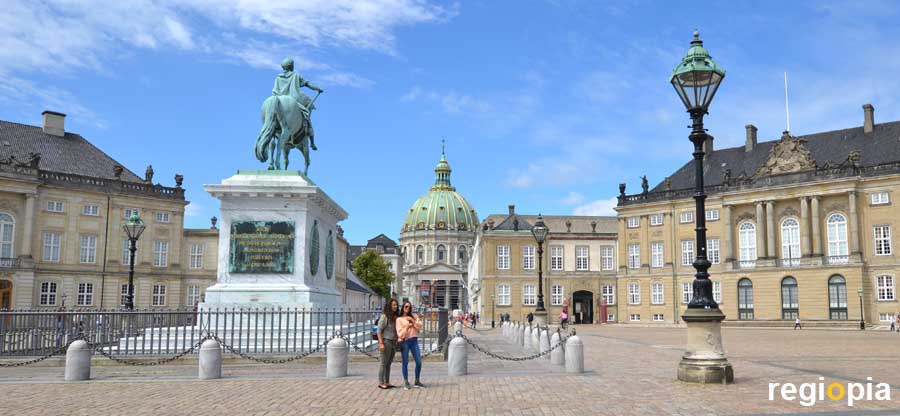
Amalienborg
Amalienborg Palace is one of the most famous sights of Copenhagen. The name refers to Sophie Amalie of Brunswick-Lüneburg, her husband Friedrich III. Denmark and Norway built a castle for her in 1673. In 1689 the castle burned down, over 170 people died in this inferno. King Frederik V. decided to rebuild the square and instructed his court architect Nicolai Eigtved to design 4 city palaces. Noble families were asked to buy the palace and got a tax privilege for the construction. In 1760, the buildings around the octagonal square were completed. The four palaces are named after their owners Moltke, Schack, Brockdorff and Levetzau.
When the royal castle of Christiansborg burnt down in 1794, Moltke offered the king his palace as a temporary residence. The Danish royal family gradually bought all the houses at the square and moved their residence to Amalienborg square. As a result, the square became Amalienborg Palace, the seat of the royal family.
On the square stands the equestrian statue of Frederik V. and in the background you can see the marble church with the green dome, which was also designed by architect Eigtved.
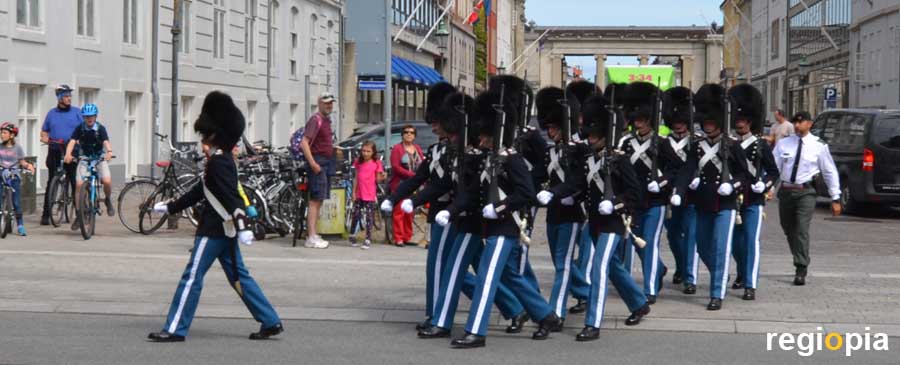
Changing of the guards
The changing of the guards in front of Amalienbog Palace is one of the main attractions of Copenhagen. At 12 o'clock the biggest exchange of soldiers takes place, with music and a lot of pomp. Every 2 hours there are minor changing of the guards. The guards are standing in wooden boxes or patrol along the 4 the palaces.
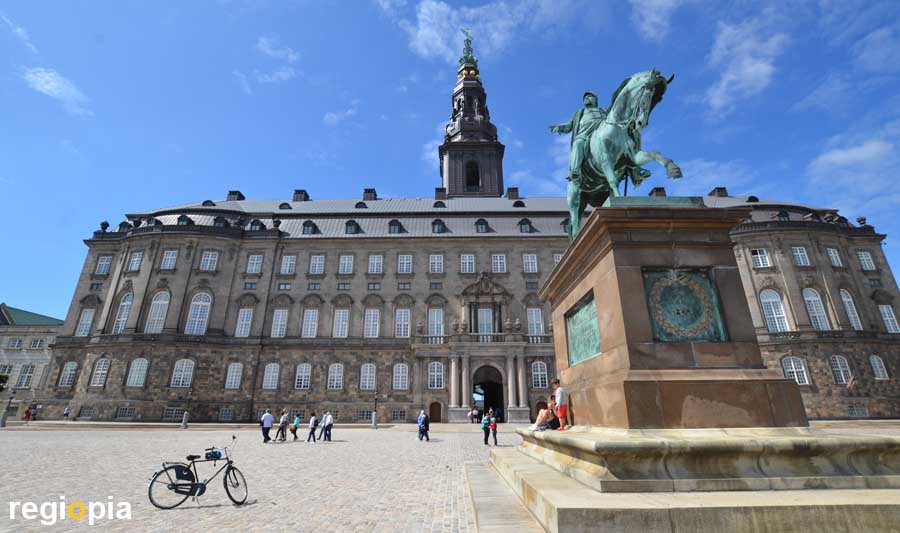
Christiansborg
Christiansborg Palace was the origin of Copenhagen, the first castle on the Slotsholm island was built in 1167. The Christiansborg Palace was built in 1736 under King Christian VI. When the castle burned down in 1794, the king moved to Amalienborg. The second Christiansborg Palace was completed in 1828. Denmark was given a democratic constitution in 1848, and when the castle was again destroyed by a fire in 1884, a new castle was built to house the three powers of the state. Today's Christansborg Castle was built between 1906 and 1937. It houses the Danish Parliament Folketing, the High Court and rooms for representative purposes.
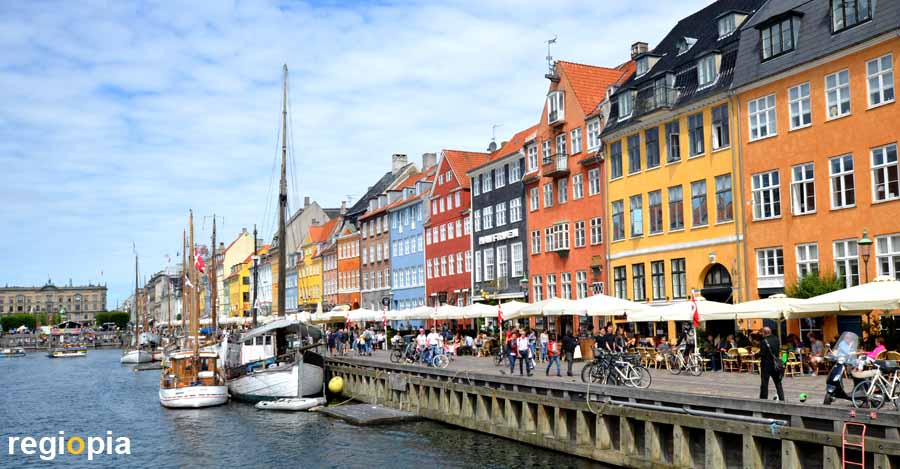
Nyhaven
The Nyhaven is the tourist hotspot of Copenhagen. The cute, colorful houses at the harbor attract tourists from all over the world. There are numerous restaurants along the waterfront. The tour boats that head for the port of Copenhagen also start at Nyhaven. The "New Harbor", as Nyhaven is called in English, was created in 1673 to connect the New market square Kongens Nytorv with the harbor.
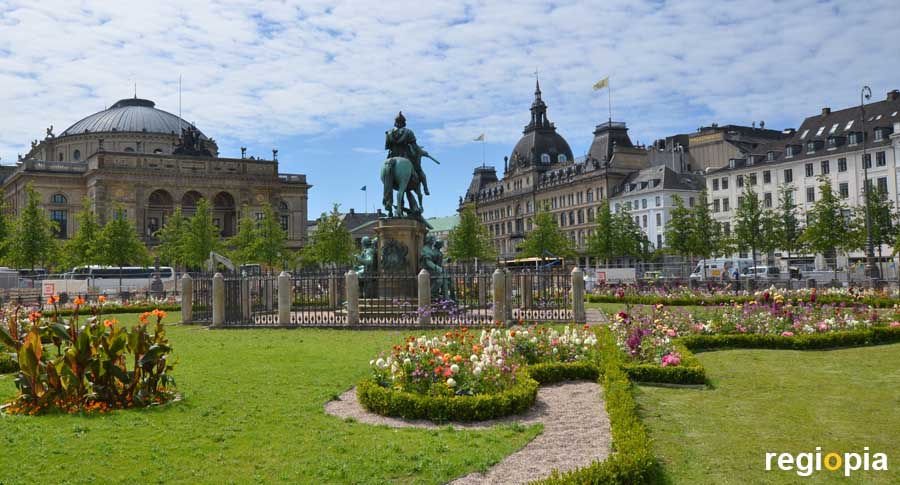
Kongens Nytorv
The Kongens Nytorv was a city expansion project of King Christian V., who create a new marketplace. For this market the Nyhaven was built, which was needed for the delivery of the goods. Kongens Nytorv means "New Royal Market". Today it is the largest square in the center of Copenhagen. Kongens Nytorv is home to the Royal Theater, Charlottenborg Palace and the Hotel d'Angleterre. The square has recently been redesigned and is now very green with trees and flowers. At the southwestern corner is the famous department store Magasin du Nord.
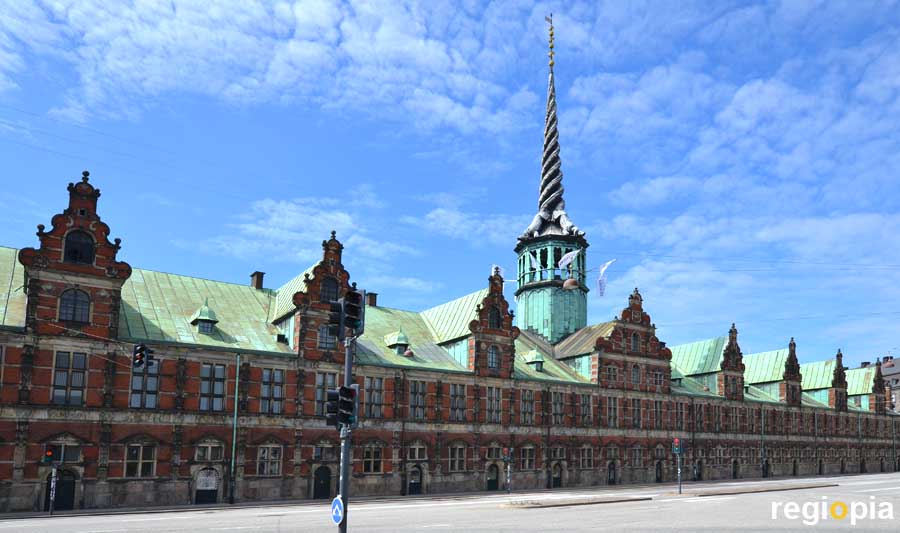
Børsen
The Børsen (Stock Exchange) is one of the landmarks of Copenhagen. The remarkable building is 127 m long and has a peak of entwined dragon tails. The Copenhagen Stock Exchange was built in 1640 in the Dutch Renaissance style. The richly decorated building was initiated by King Christian IV. The Børsen was the seat of the stock exchange until 1974. Today there are exclusive office spaces inside the historic building.
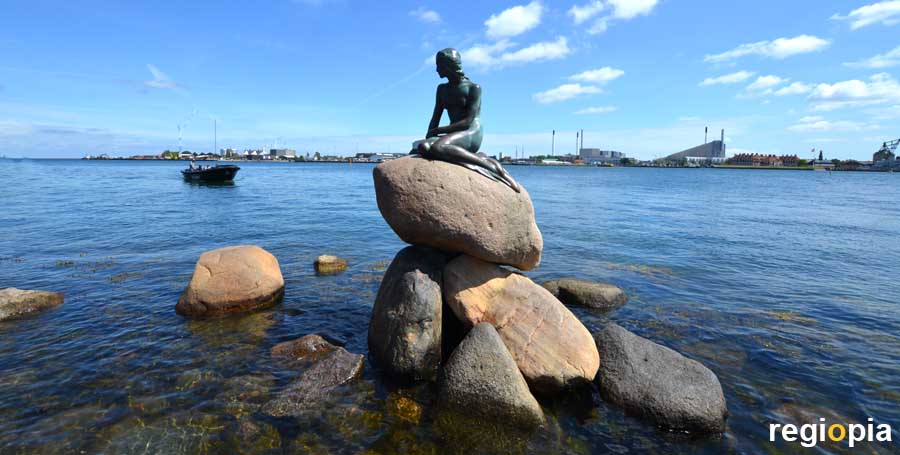
The little Mermaid
The most famous sight of Copenhagen is the Little Mermaid (Den lille Havfrue). The bronze figure on a boulder was designed by the Danish artist Edvard Eriksen. The 125 cm high figure was erected in 1913 at the port of Copenhagen. The Little Mermaid was made after the eponymous fairy tale by Hans Christian Andersen. As a sponsor, the Carlsberg Brewery took over the costs. As a model, the artist took the Danish ballerina Ellen Price for the head and his own wife for the body.
The story of the Little Mermaid is a sad love story in which the Little Mermaid saves a prince from drowning and falls in love with him. To go ashore, she goes to a sea witch and her fishtail turns into two legs. She is dumb and if the prince does not fall in love with her, she turns into foam on the sea. The prince considers another girl to be his savior and marries her, she is herself a princess. Bad luck for the Little Mermaid.
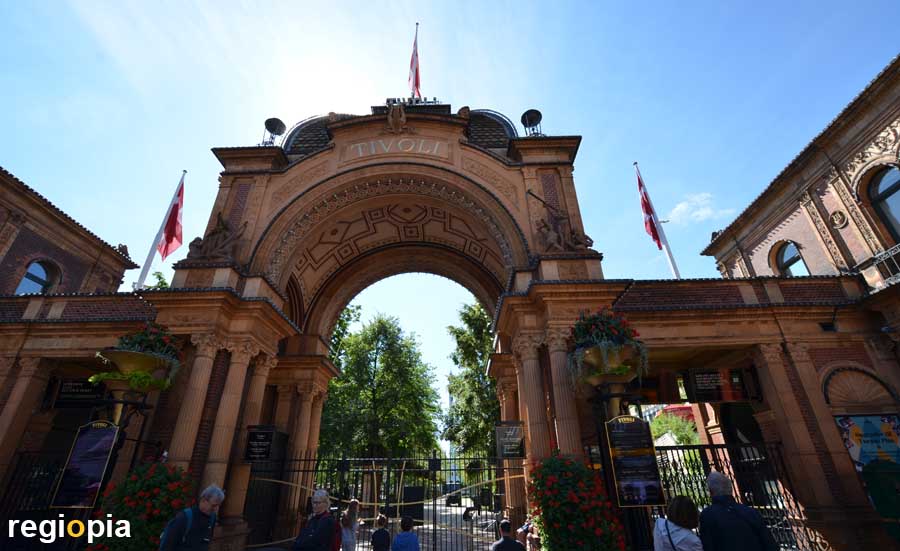
Tivoli Copenhagen
The Tivoli is the most famous tourist attraction of Copenhagen. The amusement park was opened in 1843, making it one of the oldest in Europe. The name Tivoli refers to a small town in the mountains near Rome, which was known in ancient times as a leisure and health resort. The Copenhagen Tivoli is located between the train station and the town hall, making it the first thing to be seen, when traveling by train. The Tivoli is a charming park with imaginative buildings, a lake, rides, stages and many restaurants. When it gets dark, the Tivoli turns into a fairytale of light and music. For children, Tivoli is Copenhagen's top sight, but even adults are fascinated by this exceptional amusement park.
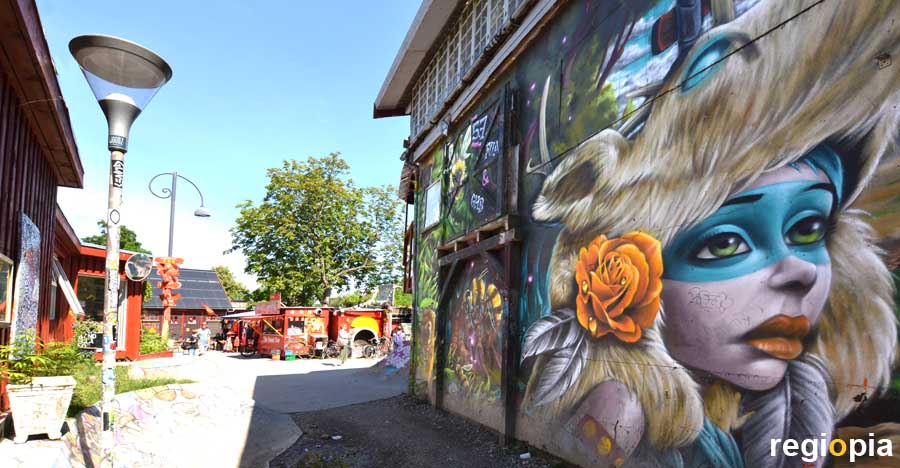
Christiania
The free city of Christiania is an alternative settlement in the district of Christianshaven. The former military site was abandoned in 1967. In 1971 the barracks were occupied and a hippie community took over. Christiania is an autonomous self-governed community tolerated by the Danish government. In Christiania, transport bicycles are produced, there is a hippie market and the famous Pusher Street, where cannabis is offered in public. There are also some cafes and food stalls.
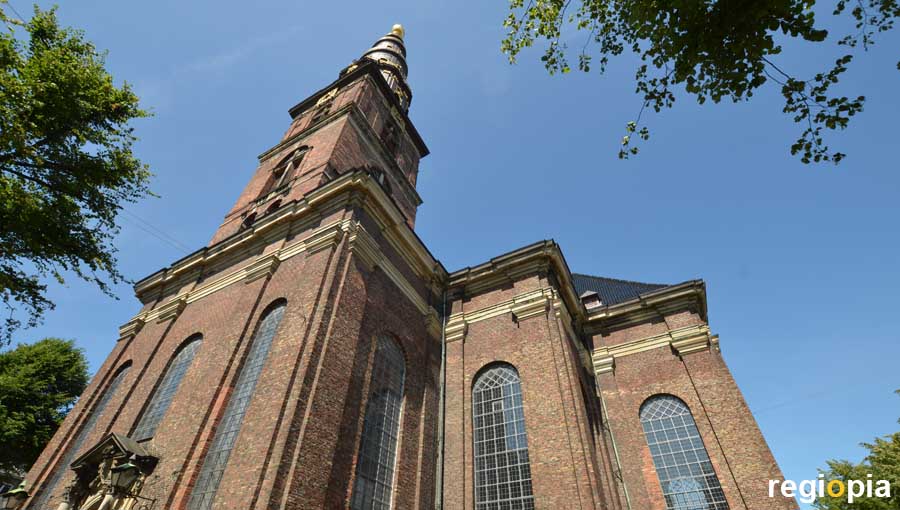
Vor Frelsers Kirke
The most famous building in the district of Christanshaven is the Evangelical Church of the Redeemer called "Vor Frelsers Kirke". Its spiral-shaped spire makes it one of Copenhagen's top attractions. You can climb the 90-meter-high tower, with the stairs winding along the outside of the tower until it becomes so narrow, that no one can get any further. Who suffers from fear of heights will start the return journey earlier. From the top of the tower you will be rewarded with the most beautiful views over Copenhagen.
The Vor Frelser church was designed by architect Lambert van Haven and built from 1689 onwards. The spiral top was built by Lauridis de Thurah until 1752. The model for the helical top is the church of Sant Ivo alla Sapienza by Francesco Borromini in Rome.
The interior is painted white and decorated in the Dutch style with a few baroque elements.
Map attractions in Copenhagen
ads
Copenhagen
ads
ads


